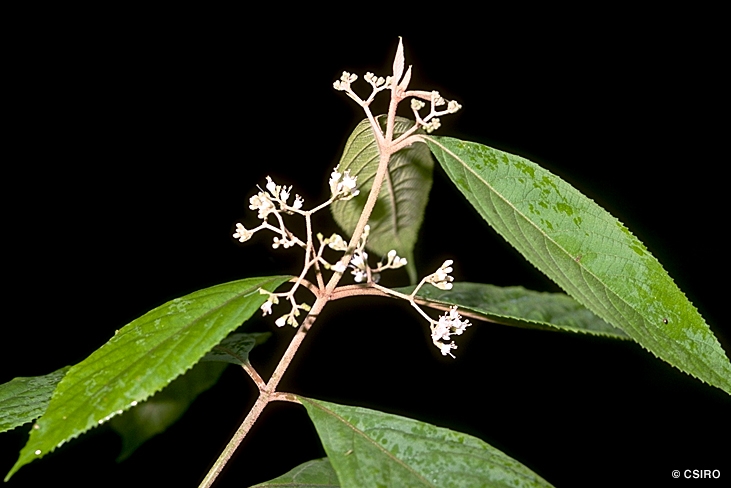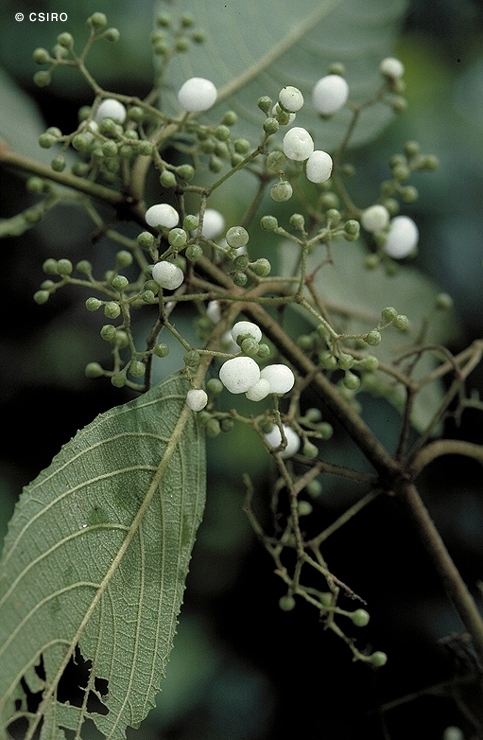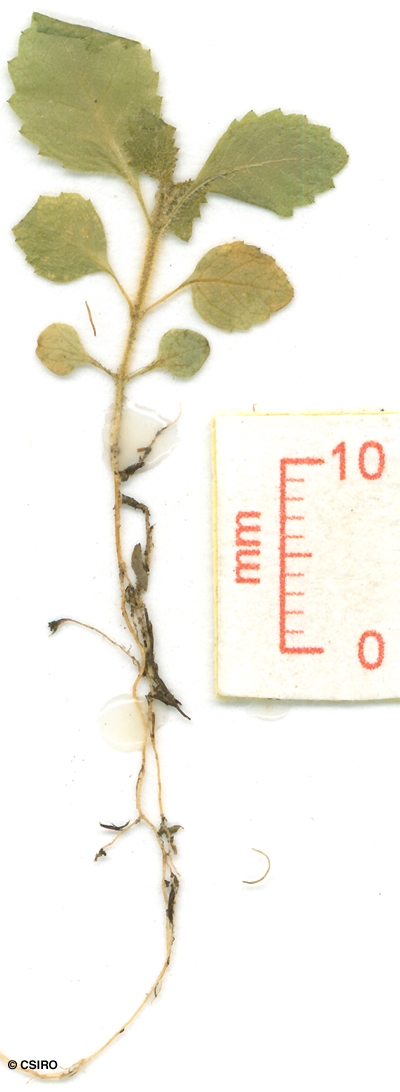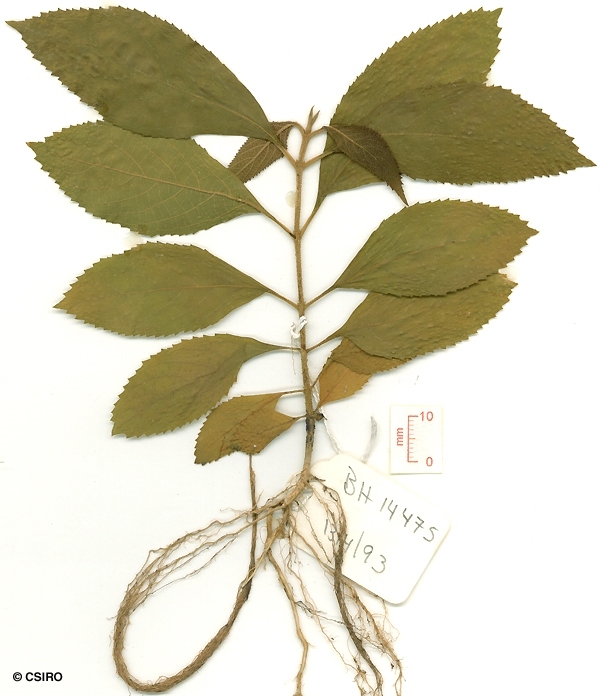Australian Tropical Rainforest Plants - Online edition
Callicarpa longifolia Lam.







Lamarck, J.B.A.P.Monnet de (1783) Encyclopedie Methodique, Botanique 1: 563. Type: Malaysia, Malacca, Sonnerat s.n.; holo: P - LA. Fide Munir (1982).
Chukin
Usually flowers and fruits as a shrub about 1-5 m tall.
Twigs, petioles and the underside of the leaf blade clothed in stellate hairs, upper surface of the leaf blade clothed in stellate hairs when young but eventually becoming +/- glabrous. Leaf blades about 13 x 5 cm. Small, pale yellow, circular glands visible with a lens on both the upper and lower surfaces of the leaf blade. Basal part of the leaf blade with a smooth margin but the remainder toothed.
Primary peduncles shorter than the petioles. Calyx about 1-1.5 x 1 mm, cup-shaped, minutely 4-toothed, densely glandular and stellate hairy on the outer surface. Corolla pubescent outside, glabrous on the inner surface, about 2-2.5 mm long, lobes about 0.5-1 mm long, tube about 1.5 mm long. Outer surface of the corolla clothed in yellow glands. Pollen white. Anthers glandular front and back. Ovary globose, about 0.5 mm diam., densely glandular with a few hairs near the apex. Style glabrous, exserted, about 3-6 mm long.
Fruit globular, about 1.5-5 mm diam., glandular (glands yellow), with a few hairs at the apex. Calyx lobes persistent at the base. Seeds enclosed in a hard endocarp. Cotyledons translucent.
Cotyledons orbicular to ovate, about 2-4 x 2-4 mm. First pair of leaves opposite, margin toothed. At the tenth leaf stage: stellate hairs also present on the upper surface of the leaf blade along the midrib and lateral veins. Circular or globular yellow glands visible with a lens on both the upper and lower surfaces of the leaf blade. Stem, petiole and underside of the leaf blade clothed in stellate hairs. Seed germination time 42 to 51 days.
Feeding trails have demonstrated that this species is toxic to calves. Everist (1974).
This species may have medicinal properties.
In the early days of the twentieth century the bark of this species was used by Japanese living along the Johnstone River in north Queensland to chew with betel nut and lime, as a substitute for the usual leaves of Piper. Cribb (1981).





